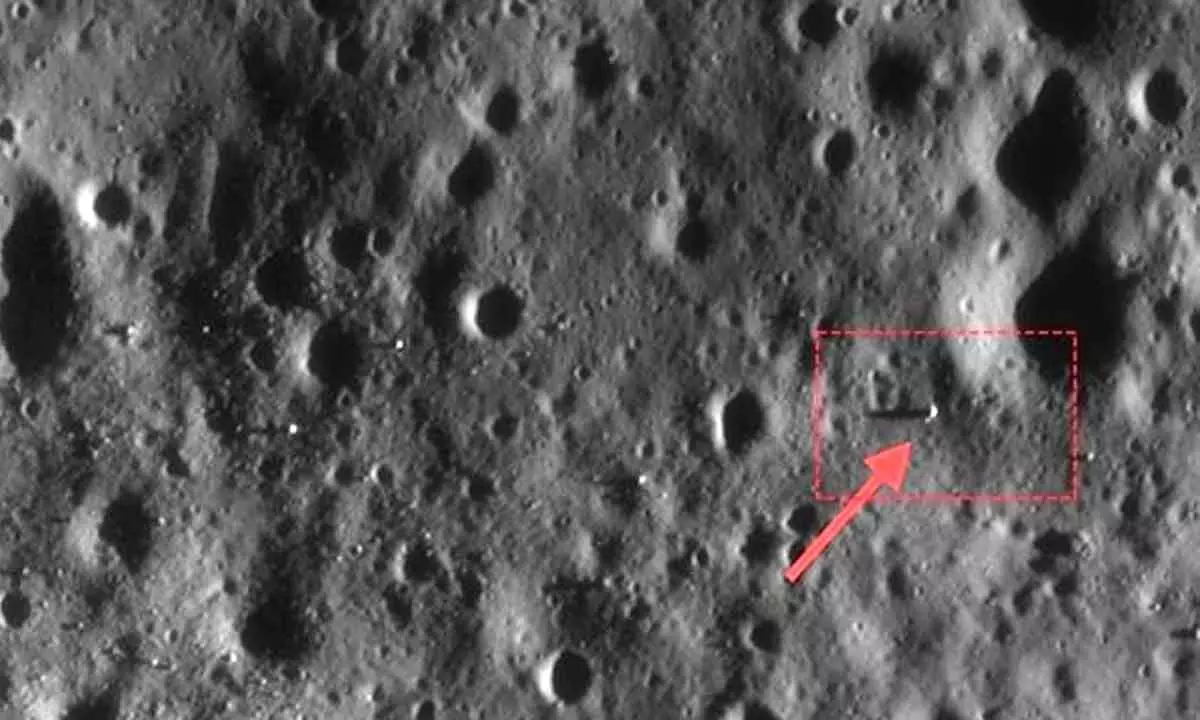Chandrayaan-2 spots Japan's Slim lander resting on the Moon

The timing of the image capture was crucial, as it occurred during a period when the sun's elevation was low, casting long, dramatic shadows across the moon's landscape
The Chandrayaan-2 orbiter had successfully captured high-resolution images of Japan's Smart Lander for Investigating Moon (SLIM), resting on the lunar surface. The images were taken on March 16, 2024, using the orbiter's high-resolution camera, which boasts an impressive pixel resolution of 16 cm per pixel.
Independent researcher Chandra Tungathurthi analysed data sent by Chandrayaan-2 to find Japan's Slim lander resting on the Moon. The Indian researcher shared three different views of the context of the location. "I regularly visit the PRADAN portal, where ISRO releases Chandrayaan data every six months. Given the periodicity of data releases, I frequently check for updates. Recently, upon revisiting the portal, I noticed a new data file," Chandra told India Today.
The timing of the image capture was crucial, as it occurred during a period when the sun's elevation was low, casting long, dramatic shadows across the moon's landscape. This not only added a visual depth to the images but also highlighted the contours and features of the lunar surface around the SLIM lander. SLIM, which is Japan's first successful moon lander, managed by the Japan Aerospace Exploration Agency (JAXA), had previously survived its third harsh lunar night, a testament to its robust design and engineering. The lander, nicknamed "moon sniper" due to its precision landing capabilities, had initially touched down near the Shioli crater, south of the lunar equator.
The images from Chandrayaan-2 provide valuable data on SLIM's condition and exact location, contributing to ongoing scientific studies and future mission planning. The successful capture of these images shows the capabilities of Chandrayaan-2's instrumentation and the strategic advantage of having such advanced technology in orbit around the moon.
Typically, examining raw data for comprehensive information can be cumbersome. To streamline this process, the researcher has developed his own toolset tailored for working with ISRO data. This toolset seamlessly integrates image data with location information, allowing for the generation of orthographic images for analysis. This approach facilitates efficient data interpretation, similar to the utilities provided by Nasa's LRO. Both India and Japan are preparing for more collaborative missions, such as the upcoming Lunar Polar Exploration (LUPEX) mission, aimed at exploring the moon's south polar region, which is believed to contain water ice in its permanently shadowed craters.

















